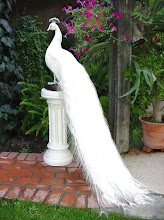Yoga for Anxiety
While anxiety (feelings of worry, fear and tension) is a normal reaction to stress, a constant state of anxiety or excessive levels of anxiety is a primary symptom of an anxiety disorder. Anxiety disorders are quite common, affecting about 18 percent of American adults, and are complex in nature, most likely occurring as a result from a combination of genetic, environmental, psychological, and developmental factors. While the traditional treatment of anxiety disorders with medication and Psychotherapy is effective, the stress reducing effects of yoga and meditation can reduce excessive levels of stress and anxiety, and can greatly enhance the effects of traditional therapies. Recent medical studies have shown that a regular practice of yoga and meditation is effective at lowering levels of anxiety. Excessive anxiety can be alleviated through a slow, gentle yoga practice focusing on postures that calm the heart and the mind, balance the emotions, and release body tension. Pranayama (yogic breathing) and meditation will also be helpful to calm the mind and body, and to reduce stress and negative thinking.
Besides the calming effects of a general yoga practice, restorative poses, inversions and forward bends are especially calming to the body and mind, helping to reduce and prevent excessive anxiety. The following poses are known to be especially calming: child, shavasana, crocodile, supine bound angle pose, seated forward bend, and seated head to knee. Simple inversions such as downward dog, standing forward fold, standing yoga mudra, shoulderstand, plow and supine staff pose create a temporary rise in blood pressure in the head which triggers the body’s natural calming mechanisms, dilating the blood vessels and lowering heart and breathing rates. If symptoms of fatigue, depression and heart palpitations are present, the qi or energy of the heart center may be weak, and heart opening poses such as Cobra, Pigeon, Fish, Boat, Bow and Bridge would both strengthen and calm the heart chakra.
Emotions play a large role in anxiety disorders. Excessive feeling of fear, worry, irritability, anger and depression can all add and exasperate our level of anxiety. Twists, hip opening poses and sidebends will all help to balance the emotions, and thus help reduce feelings of anxiety. Twisting and hip opening poses harmonize the nervous and endocrine systems, the two primary systems that regulate our emotional health, and side bending poses activate the Liver meridian, the energy channel known in Chinese medicine to regulate the emotions. The following poses will be especially helpful to regulate the emotions: prayer squat, standing angle, supine bound angle, half circle, revolved head to knee, seated angle, seated twist, knee down twist, and prayer twist.
The breath plays a major role in many cases of excess anxiety. During feelings of anxiety, the breath becomes shallow, rapid and constricted, which in turn reinforces our nervous system’s state of anxiety. When practicing pranayama, yogic breathing exercises, the nervous system is naturally calmed and soothed. With a regular practice we can learn how to consciously maintain a slow deep breath at all times to prevent and minimize excess states of anxiety. The practice of Dirga and Nadi Sodhana Pranayamas will be the most strongly calming to the body. If there is excess heat in the body, with symptoms of agitation, restlessness, impatience, craving, compulsions and poor sleep, then Sit Cari and Shitali pranayamas will be helpful as well.
The mind also plays a major role in most states of long-term anxiety. Continual focus and obsession with thoughts of fear and worry will only create additional levels of anxiety. Yoga and meditation allow us to have control over our thoughts through mental detachment and the ability to focus the mind on the present experience. The benefits of a regular meditation practice are known to include the reduction of stress, tension, anxiety and frustration.
Yoga, pranayama and meditation are all powerful tools in the reduction and prevention of excess states of anxiety. All of these practices cultivate the mental faculties of faith, self-control, concentration, determination, and patience. And when practiced together will create an even stronger effect on calming the mind and emotions.
When using the above yogic practices, it is important to avoid any of these yogic practices scare you or make you feel unsafe, as this may trigger the body's fight-or-flight response, which in turn will increase feelings of anxiety. And while yoga is effective at treating excess levels of anxiety, yoga is not a substitute for conventional medical treatment; please consult your medical professional if you are experiencing any of the signs or symptoms of anxiety disorders.


No comments:
Post a Comment